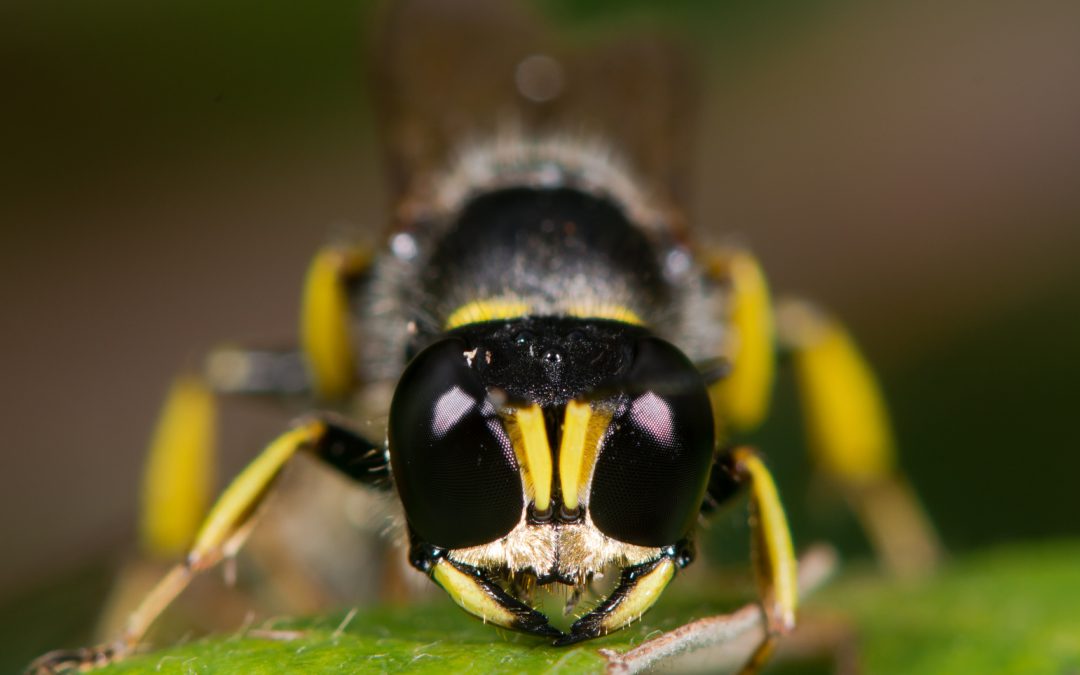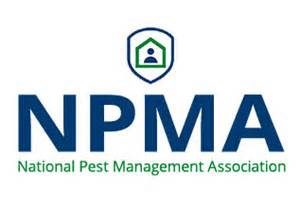Wasps flying around a yard can strike fear into many homeowners. When the wasps tend to be prevalent in the yard, the homeowner might be worried about going into their yard for fear they’ll be stung by the wasps. It may be sensible to learn more about the type of wasp in the yard to determine how much of a problem it might be and what they can do about it.
Ground digger wasps, also known as cicada killer wasps, are a common type of wasp that might be noticed around homes. These wasps live in the ground in tiny holes and hunt cicadas for food. Homeowners may notice them in the yard if there are many cicadas living nearby. These wasps are generally not aggressive towards humans, but the homeowner might want to learn more about how to get rid of ground digger wasps if they appear in the yard.
Are Those Digger Wasps in the Yard?
Digger wasps, fully grown, tend to be around one and a half inches to two long. They can, however, get to be around three inches long. Since they’re amongst the largest wasps, they tend to look incredibly intimidating to most homeowners. They’re mostly black, with yellow stripes on their abdomen and translucent orange wings. They live throughout North America in areas that cicadas frequent.
The digger wasps prefer open areas and sandy soil that’s easy to dig into. When present in an area, they will dig about six inches into the ground to create their nest. Females tend to dig a few nests at a time, so there could be a few holes close together in an area where they live. They do tend to be solitary wasps, but there could be multiple in an area if there are a lot of cicadas nearby.
Are the Digger Wasps Damaging Your Lawn?
The nests created by the digger wasps tend to have an opening about the size of a quarter and go about six inches into the ground, although they can dig the nests up to about two feet down. There are usually up to six in an area together, but if there are multiple digger wasps nesting close to each other, this could mean more holes in the yard.
The holes in the yard can help to aerate the soil. However, if there are too many digger wasps nesting close together, it could end up damaging the lawn because of all the nesting holes in one area. Homeowners who notice many different holes in the yard that could be attributed to digger wasps will want to learn how to remove them from the area to protect their lawn.
What’s the Life Cycle of the Digger Wasp?
Around the beginning of the summer, young digger wasps will start to emerge from the nests. They’ll only be around for a month or so, but during this time they will come out to hunt cicadas and start to dig their own holes for their nests.
After around a month, the female digger wasps place cicadas in the nests and then lay their eggs on the cicadas. The tunnel entrances are then closed, and the female digger wasp dies. The next summer, the larvae will feed on the cicada in the nest until it’s time for them to come out of the nest and start hunting the cicadas on their own.
Can Digger Wasps be Dangerous for People?
Digger wasps tend to leave well enough alone when it comes to humans. While they might seem a little bit intimidating when they’re flying around the yard, they don’t instinctively protect their nests, so they aren’t generally aggressive. If humans don’t go near them or try to bother them, they don’t tend to sting.
If they feel as if they’re being attacked, digger wasps will sting to protect themselves. The stings can be very painful because of the large size of the wasps. While it is rare for them to sting compared to other wasps and bees, if they sting someone who is allergic to wasps, they could cause an allergic reaction.
How Can Digger Wasps be Removed and Controlled?
Controlling digger wasps is a matter of killing the females and the eggs so they will not return. They do not tend to move far from their nests, so after a few days, they should be completely removed from the property. One of the most commonly used ingredients to get rid of digger wasps is to use ammonia.
The homeowner should try to find as many of the nests as possible. If their lawn is grassy, the nests can often be found where there are bare patches in the grass. The nests look like a clump of dirt with a small hole in it, often about the size of a quarter. All the nests found should be marked so the homeowner will be able to track them over the next few days.
Once the nests are marked, the homeowner will want to wait until the digger wasps return to the nest for the night. The later at night the next step is done, the more likely it is the homeowner will be able to get rid of the female and any eggs that have been laid. In each of the holes, the homeowner can pour some ammonia. They’ll need to then quickly fill in the nests, so the digger wasps cannot get out and get away from the ammonia.
It is often a good idea for the homeowner to leave the markings in the ground for a few days, so they won’t try to do the same nest more than once. Over the next few days, they can check the nests and see if there are any new ones. If there are new ones, the same process can be done to get rid of them as well.
If you’ve noticed very large wasps flying around your home, they could be digger wasps. While they will disappear after a month or two, they will come back every year. If there are too many in the area and you think they could be damaging your lawn or could be dangerous around small children or pets who like to play in the yard, these tips should help you identify them and get rid of them.
For help with fast and effective Digger Wasp control, contact the pest control specialists at Animal Control Specialists.



Last year I had many ground killer wasps swarming my yard. There were to many holes to even try to fill them all. I purchased a powder that was supposed to kill them at $65 a jug. I tried twice and it was impossible to get the powder in the holes and there were just to many. This year, in May I started to see the piles of dirt in my yard. I went to Lowe’s and bought Amdro liquid instant insect killer. I then bought at the dollar store, the squeeze bottles for mustard and ketchup for a dollar. The bottles have a pointed tip. I filled the bottles with the liquid and every day walked my yard and poured some Amdro in the holes. Many times, the wasp would try to come out of the hole but die within seconds. I did this every day. Now it is the middle of July and I have only a couple of wasps flying around instead of last year when it seemed like a million. I have found my solution and it has worked for me.
We have the same problem EVERY year, but later in the season. I will start seeing the ground wasps flying the first of July. It is difficult to find the nests because we have an inground pool and they tend to go underground between the grass and concrete walk around the pool meet. This year we filled in that area with more soil however I have very large arborvitae on the hill behind the pool and believe they are somewhere in there. I have use a spray foam called Terro into the dirt holes but the problem keeps reappearing each year. Is there any way to get to these things BEFORE they hatch??? Tired of fighting this battle AND we do not have one cicada around this year so not sure why they are here.
Thank you. The Cicadas sang at the top of their voices day before yesterday. Since then I have found 2 nests. I just happen to have Amdro liquid. I’ll definitely try it.
I have a grassy mound at the end of my driveway on the strip of lawn shared with my neighbor. Not sure what used to be planted there but it’s relatively large (circle/oval in shape, 4-6 inches above the surrounding level ground, and about 3 to 4 ft in diameter. Its a pain to mow because it’s softer ground and has a few deep grooves/canals (call them whatever) running across the mound about 1 to 2 inches deep and 3 inches or so wide. Point is, it’s tailor made for an underground hive. Sun beats down on that spot pretty much all day. No foot traffic and is left undisturbed. I can’t tell the species of wasp. Almost as if there were 2 or 3 different types, somewhat aggressive when I had the mower out on the mound but they weren’t chasers like the ones I stumbled upon last summer in another part of my yard. This mound has 2 different looking holes. A few were smaller and in the dirt on the surface. Almost looked like ant holes but no small mounds. Just flat holes in exposed dirt. However, there are also 4-6 relatively significant size holes that are hidden under tufts of grass or weeds, with openings set deeper in the crevasses I mentioned. All of these holes were at least half-dollar in size and all were sort of angled so that they face up at about a 30° to 45° angle. Not flat or straight down. I almost thought either snakes or rabbits but snakes don’t make this many holes, rabbits hide entrances much much better and are a little bigger. Not groundhogs because no other signs in the rest of either my yard or the neighbor’s yard. And also, ain’t nothing gonna post up underground in the same mound as a bee or wasp. Still I wonder what kind they are (mostly black with a bit of yellow but looked more round like a bumble bee and, again, not as aggressive as I had anticipated. Somewhat on the larger end of the size scale and slower moving too. Kind of hovered right over the entrances, not zipping around me fast like the ones from last year. And not as many either. In total I say there were more than 5 but less than 10 when I was at my most disturbing to them with my mower right on top of the mound for a good 2-3 mins. So, any ideas on who/what I’m dealing with and best ways to eradicate myself? I’ll use whatever is easiest and most effective. Don’t care if it’s chemical or natural or household stuff. One thing though, due to the number, angle, and positions in the crevasses, there is no way to cover the holes with bowls or similar things. This has to be an instant/contact death method, or disable/immobilize and drown method. Also, I don’t want to scream like a little girl in front of my neighbors at night on our quiet street, and I have arthritis in both knees so running hurts worse than it looks. And it looks pretty ridiculous when I run. Thanks.
To get rid of the ground digging wasps: during the day mark the nest holes by placing a white plastic knife close to the hole. Then at night when it’s dark (around 9:30 or later) bring a jug of ammonia and a narrow funnel. Put the funnel in the hole and pour at least a pint of ammonia down the hole via the funnel. This will do the job.
Blue winged wasps eat Japanese beetles. If you don’t want Japanese beetles eating your plants, don’t kill the wasps. Also, these wasps will not sting you. Finally, they are a native insect – just the kind we should be leaving alone.
That was a wonderful reply.
I have multiple digger wasps nests in my yard. My landscaper and I tried Zevo, and cinnamon. I used those products because I have a beagle who is a digger. The products didn’t work so I caved and hired an exterminator. He has sprayed twice. Not as bad but when I still see them I freak. Can’t let my dog out in the yard. She likes sitting in the holes and I fear she may be stung. Exterminator coming ago Saturday but I will pick up ammonia and raid until the professional comes out. Very frustrating because I don’t walk my dog in this heat.
For the 1st time in the 30 years we’ve owned our property, I now see about a dozen 4-5″ mounds of excavated soil each at the end of a 1/2″ hole, like those made by sand crabs at the beach. I saw wasps at 2 of these holes. I’ll try the ammonia solution.
End of last season I seen this enormous giant wasp bee thing I’d never seen before. I usually always treat my yard in early spring for critters I did not this year because we had weeks of freezing ice and snow so I thought that surely took care of anything underground. Much to my surprise I have about 100 ground hornets and swarming digging wasps where we back out of our driveway and the grass is dying there. I seen these hills a week ago and I seen the giant wasp bee I’m talking half the size of my hand this thing and it did come back and it did dissappear few weeks now I have hundreds of these. I’ll try both methods mentioned. 1st ammonia 2nd lowes stuff. I do have chickens but they are in back yard away from the main road I think I’ll try letting them have 1st dibs at these crazy things. My 5 year old is terrified to play outside now so they have to go. Wish I had knowledge of this prior to their hatching though. I get conservation magazines monthly kids and adults have never seen anything about these in it.
Excellent blog , Its very useful and helpful blog for termite removal perth to me .Thanks for sharing your blog for everyone .Keep sharing .